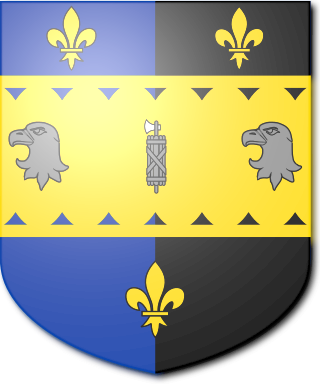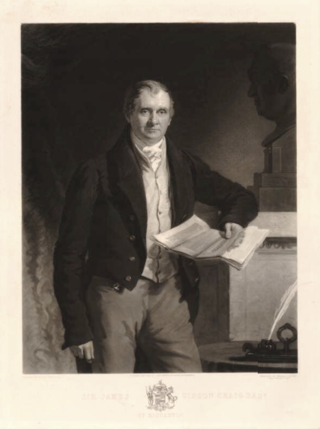
There have been two baronetcies created for members of the Jessel family, both in the Baronetage of the United Kingdom. One creation is extant as of 2012.

The Austin Baronetcy, of Red Hill in the parish of Castleford in the West Riding of the County of York, is a title in the Baronetage of the United Kingdom. It was created on 16 July 1894 for John Austin, Liberal member of parliament for Osgoldcross.

The Bunbury Baronetcy, of Bunbury, Oxon and Stanney Hall in the County of Chester, is a title in the Baronetage of England. It was created on 29 June 1681 for Thomas Bunbury, Sheriff of Cheshire from 1673 to 1674 and the member of an ancient Cheshire family. His grandson, Henry, the third Baronet, and great-grandson, the fourth Baronet, both sat as Members of Parliament for Chester. The latter died unmarried at an early age and was succeeded by his younger brother, the fifth Baronet. He was a clergyman. On his death in 1764 the title passed to his eldest son, the sixth Baronet. He represented Suffolk in the House of Commons for over forty years but is best remembered for his marriage to Lady Sarah Lennox. He died childless in 1821 and was succeeded by his nephew, the seventh Baronet. He was the son of Henry Bunbury, younger son of the fifth Baronet. The seventh Baronet was a distinguished soldier and politician. His eldest son, the eighth Baronet, was High Sheriff of Suffolk in 1868, and Fellow of the Royal Society. He died childless in 1886 and was succeeded by his younger brother, the ninth Baronet. He was Liberal Member of Parliament for Bury St Edmunds. He died unmarried in 1895 and was succeeded by his nephew, the tenth Baronet. He was the son of Colonel Henry William St Pierre Bunbury, third son of the seventh Baronet. He served as High Sheriff of Suffolk in 1908 and was a Deputy Lieutenant of the county. On his death in 1930 the title passed to his son, the eleventh Baronet. He was High Sheriff of Suffolk in 1936 and was a Deputy Lieutenant of the county. His son, the twelfth Baronet, was High Sheriff of Suffolk in 1972. As of 2014 the title was held by the latter's second but eldest surviving son, the thirteenth Baronet, who succeeded in 1985.

The Bagge Baronetcy, of Stradsett Hall in the County of Norfolk, is a title in the Baronetage of the United Kingdom. It was created on 13 April 1867 for William Bagge, Conservative Member of Parliament for West Norfolk. The sixth Baronet was Chairman of the West Norfolk District Council between 1976 and 1977.

The Whitehead Baronetcy, of Highfield House in Catford Bridge in the County of Kent, is a title in the Baronetage of the United Kingdom. It was created on 26 November 1889 for James Whitehead, Lord Mayor of London between 1888 and 1889 and later member of parliament for Leicester. His younger son, the third baronet, was also a Member of Parliament.

There have been two baronetcies created for the Guise family, one in the Baronetage of England and one in the Baronetage of Great Britain. The latter creation is extant as of 2014.

The Ingram Baronetcy, The Bungalow, Westgate-on-Sea in the County of Kent and of Swineshead Abbey in the County of Lincoln, is a title in the Baronetage of the United Kingdom. It was created on 9 August 1893 for William Ingram. He was managing director of The Illustrated London News and Liberal Member of Parliament for Boston. Ingram was the son of Herbert Ingram, the founder of The Illustrated London News, who also represented Boston in the House of Commons.

The Edwards-Moss Baronetcy, of Roby Hall in the parish of Huyton-cum-Roby in the County Palatine of Lancaster, is a title in the Baronetage of the United Kingdom. It was created on 23 December 1868 for Thomas Edwards-Moss. Born Thomas Moss, he had assumed by Royal licence the additional surname of Edwards in 1851, having married Amy Charlotte, daughter and heiress of Richard Edwards of Roby Hall, Lancashire. The presumed fifth Baronet does not use his title. As of 2021 he had not successfully proven his succession, and is therefore not on the Official Roll of the Baronetage, with the baronetcy considered dormant.

The Baronetcy of Gresley of Drakelow was created in the Baronetage of England on 29 June 1611 for George Gresley of Drakelow Hall, Derbyshire who was later High Sheriff of Derbyshire and Member of Parliament for Newcastle-under-Lyme.

The Fletcher, later Boughey Baronetcy, of Newcastle-under-Lyme and of Betley both in the County of Stafford, is a title in the Baronetage of Great Britain. It was created on 24 August 1798 for Thomas Fletcher, of Betley Court, Staffordshire, High Sheriff of Staffordshire in 1783 and 1789 and Deputy Lieutenant of the county. He was the husband of Elizabeth Fenton, granddaughter of George Boughey, of Audley, Staffordshire whose will provided for his great-grandson to inherit the Audley estate.

The Winnington Baronetcy, of Stanford Court in the County of Worcester, is a title in the Baronetage of Great Britain.

The Hoghton or Houghton, later Bold-Hoghton, later de Hoghton Baronetcy, of Hoghton Tower in the County of Lancashire, is a title in the Baronetage of England. It was created on 22 May 1611 for Richard Hoghton, Member of Parliament for Lancashire. The Hoghton family had been landowners in Lancashire since the reign of King Stephen and had been Knights of the Shire for Lancashire since the 14th century. The second Baronet represented Clitheroe and Lancashire in the House of Commons and was a Royalist leader during the Civil War. The third and fourth Baronets both sat as Members of Parliament for Lancashire. The fifth Baronet was Member of Parliament for Preston and East Looe while the sixth and seventh Baronets represented Preston. The eighth Baronet assumed the additional surname of Bold. In 1892 the ninth Baronet resumed, by Royal licence, the ancient family surname of de Hoghton.

The Fleming, later le Fleming Baronetcy, of Rydal in the County of Westmorland, is a title in the Baronetage of England. It was created on 4 October 1705 for William Fleming, Member of Parliament for Westmorland. The second Baronet was Bishop of Carlisle. The third Baronet represented Cumberland in the British House of Commons. The fourth Baronet was Member of Parliament for Westmorland. He assumed the surname of le Fleming, an ancient version of the family surname. This version of the surname has also been borne by the Baronets from the seventh Baronet onwards. The sixth Baronet, an ordained priest, served as Rector of Windermere.

Cottesbrooke Hall and the Cottesbrooke estate in Northamptonshire, England is a Grade I listed country house and estate.
Sir James Langham, 2nd Baronet of Cottesbrook, Northamptonshire was an English politician who sat in the House of Commons at various times between 1656 and 1662. He married four times, but he had no heir.
Sir James Langham, 7th Baronet was an English politician who sat in the House of Commons from 1784 to 1790.

The Palmer Baronetcy, of Carlton in the County of Northampton, was created in the Baronetage of England on 7 June 1660 for the lawyer and politician Geoffrey Palmer. The second Baronet was Member of Parliament for Higham Ferrers. The third, fourth and fifth Baronets all represented Leicestershire in the House of Commons. The fifth Baronet served as High Sheriff of Leicestershire in 1782 and the eighth Baronet as High Sheriff of Northamptonshire in 1871.
The Robinson Baronetcy, of London, was created in the Baronetage of England on 22 June 1660 for John Robinson, Lord Mayor of London and Member of Parliament for the City of London and Rye. He was the nephew of Archbishop William Laud. The fifth and sixth Baronets both represented Northampton in the House of Commons.
Sir John Lowther Johnstone, 6th Baronet (1783–1811) was a British army officer and politician.

Sir James Gibson-Craig, 1st Baronet (1765–1850) was a Scottish lawyer and government official. In politics he was a Foxite Whig. In early life he was known as James Gibson of Ingleston. He was created a baronet in the Baronetage of the United Kingdom in 1831.
















